|
|
|
|
| Home > Reviews > Small Scale > IBG Models Kit No. 72125 - M13/40 Italian Tank (Late Production) |
M13/40 Italian Tank (Late Production)
IBG Models, 1/72 scale
Reviewed by Brett Green

| Stock Number and Description | IBG Models Kit No. 72125 - M13/40 Italian Tank (Late Production) |
| Scale: | 1/72 |
| Media and Contents: | 75 parts in grey plastic; 17 photo-etched parts on one fret; markings for four vehicles. |
| Price: | 16,50 € plus shipping available online from IBG Models' web store £14.94 UK Price (£12.45 Export Price) plus shipping available online from Hannants and other specialist model retailers online and worldwide |
| Review Type: | FirstLook |
| Advantages: | High level of detail and moulding; clever running gear breakdown including integrated wheels and tracks; photo-etched parts included; good quality decals. |
| Disadvantages: | None noted. |
| Recommendation: | This is a simple but well-detailed kit of the backbone of the WWII Italian tank force. I particularly like the clever engineering of the tracks and running gear. |
Background
The Carro Armato M13/40 was an Italian World War II tank designed to replace the M11/39 in the Royal Italian Army at the start of World War II. It was the primary tank used by Italian forces throughout the war.
The design was influenced by the British Vickers 6-Ton and was based on the modified chassis of the earlier M11/39.
Production of the M11/39 was cut short in order to get the M13/40 into production.
The name refers to "M" for Medio (medium) according to the Italian tank weight standards at the time, 13 tonnes was the scheduled weight and 1940 the initial year of production.
The M13/40 was used in the Greek campaign in 1940 and 1941 and in the North African Campaign.
The M13/40 was not used on the Eastern Front; Italian forces there were equipped only with L6/40s and Semovente 47/32s.
Beginning in 1942, the Italian Army recognised the firepower weakness of the M13/40 series and employed the Semovente 75/18 self-propelled gun alongside the tanks in their armoured units.

The tank had many shortcomings that severely hampered its effectiveness on the battlefield. The engine provided good range, but not great power and reliability. The M13's engine was the same as the M11/39 but the newer tank was heavier, which resulted in lower speed and more strain on the powerplant.
The suspension and tracks were reliable, but resulted in relatively low speeds, not much better than infantry tanks such as the Matilda.
Armament was sufficient for 1940–41 but did not keep up with the increased armour and firepower on Allied or German tanks.
The method of construction using rivets was outdated. Most tanks of the era were switching to the use of welding for construction, since rivets can shear off when hit, becoming additional projectiles inside the tank.
The two-man turret was less efficient in combat than the three-man turrets used in many other tanks of the era. Radios were not fitted to many tanks.
Italian historians Filippo Cappellano and Pier Paolo Battistelli have pointed out that the disappointing performance of the tank early in the war, where its armament was by no means inadequate, can be ascribed to its crews' almost complete lack of training (the first tank training centre was created only in 1941) and experience, coupled with poor tactical doctrine, the lack of radios, and the fact that many units were hastily created and sent to the battlefield, and also to the lack of armoured recovery vehicles; they state that, while the training and experience of the Italian crews improved during the conflict, their tanks' technical disadvantage worsened. In such a condition, they marvel that the Italian tanks were able to fight for as long as they did.*
FirstLook
There have been a number of 1/72 scale M13/40 kits over the last five. Most recently, Italeri's 2010 release was more of a simplified wargamer's kit. Prior that, ESCI had an example released in 1975, when I was still in high school. Most of the other M13/40s in this scale are re-boxes of the ESCI kit.
Now, finally, IBG presents us with an all-new 21st Century 1/72 scale M13/40.
IBG's M13/40 Italian Tank comprises 75 parts in grey plastic, 17 photo-etched parts on one fret, and markings for four vehicles.
The kit is moulded in a smooth, satin finish medium grey plastic. They are flawless as far as I can see. Detail is crisp, subtle and convincing. Raised rivet heads, recessed panel lines, hinges and other structural features are all there in glorious small scale.
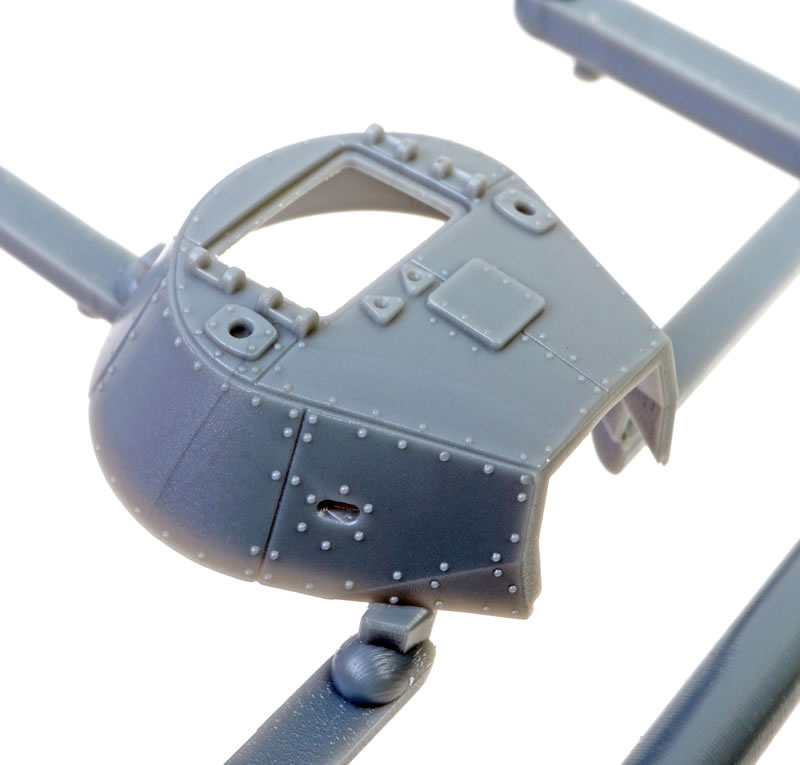
Parts are attached to the sprues with moderately narrow strips.
The lower hull sides, bottom and front are moulded as a single part.
The upper hull is made up from three main piece – the front panel, the engine deck (with some really nicely moulded vents) and a blank centre.
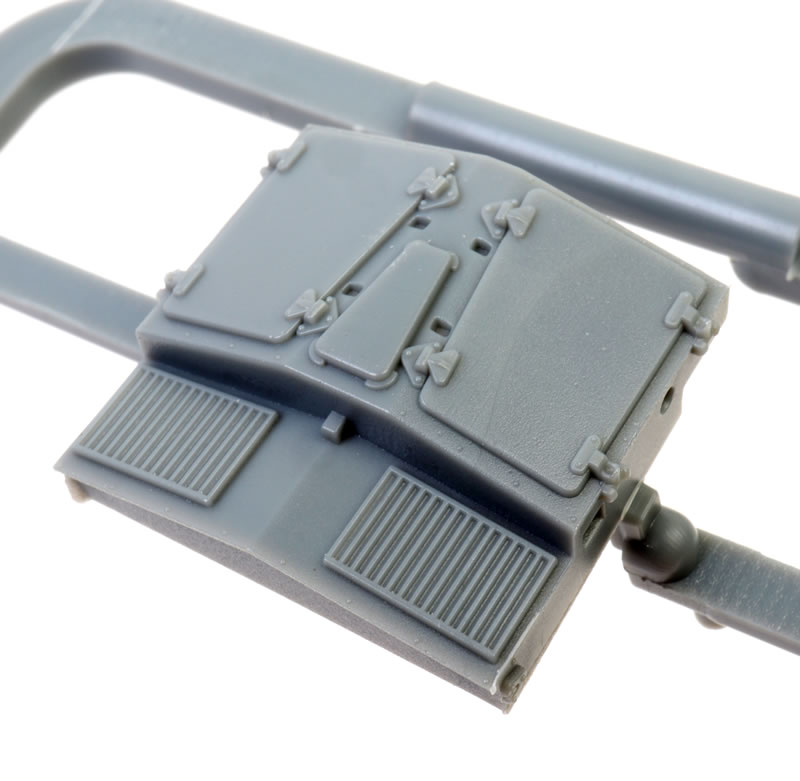
The hull superstructure is moulded as one piece too. I appreciate the lack of “flat pack” here.
Vision hatches are moulded separately.
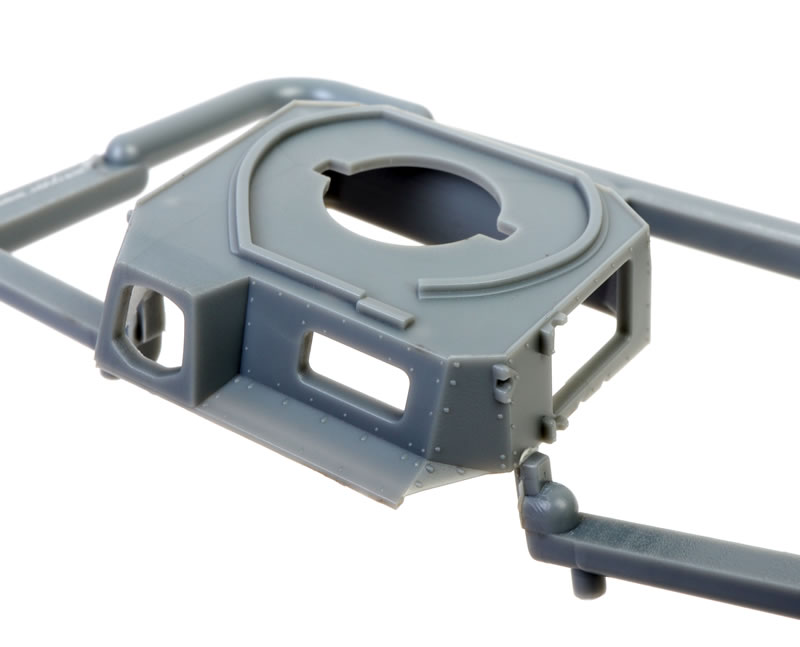
It looks like the hull machine gun and the main armament will be able to elevate and depress after assembly.
Assembly begins with the running gear and tracks. These have been thoughtfully designed for speed and ease of assembly with no compromise in detail. The tracks are moulded as one part with the inner row of road wheels, return rollers, idler wheel and drive sprocket.
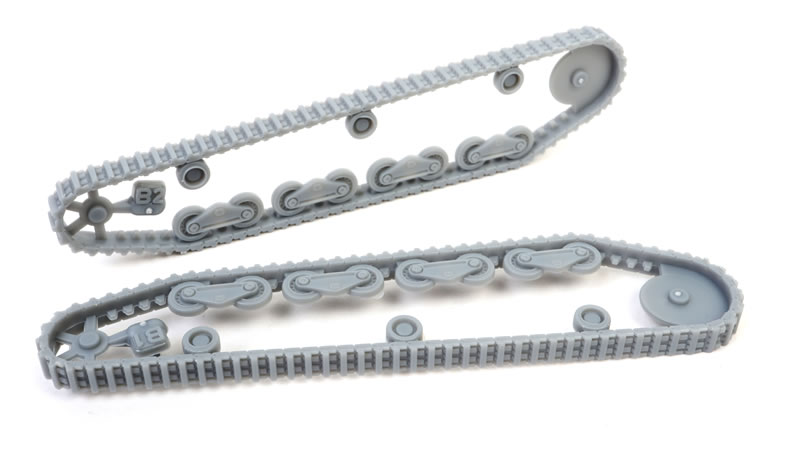
Track thickness is acceptable and detail is terrific. Each link features recessed holes representing track pins.
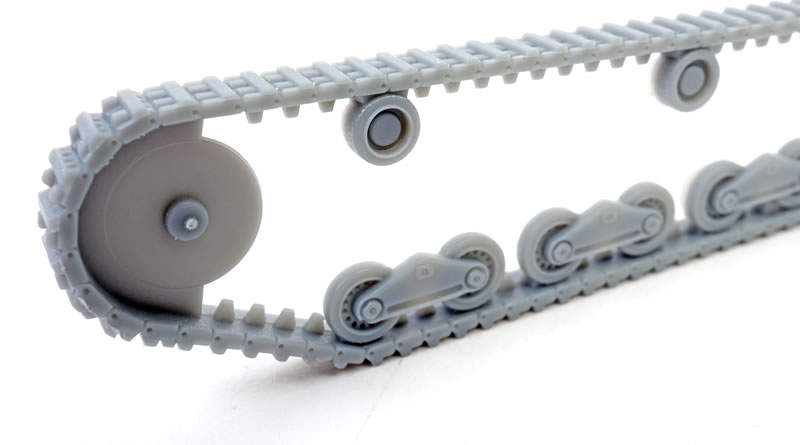
The bogie trucks are moulded as one main piece each. The only bits missing are the two inner wheels and their connecting mounts that are attached to the tracks. The road wheels and springs are well detailed with raised rims, small even perforations on the wheel hubs and locking nuts.
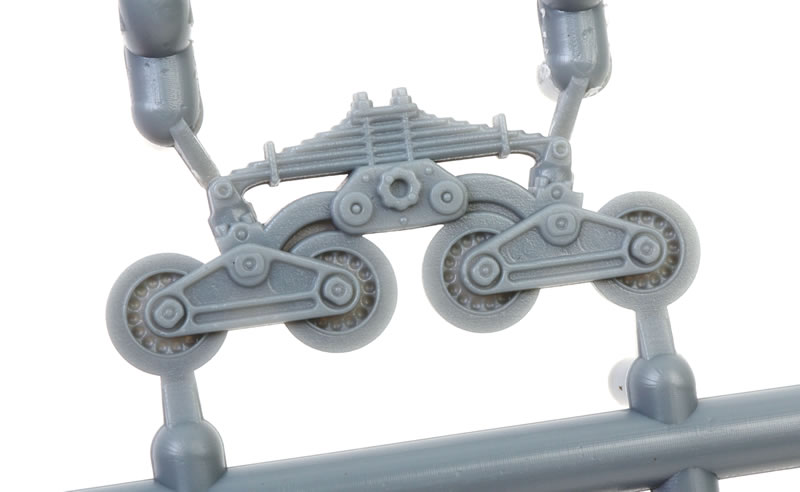
The idler wheel and drive sprocket parts are attached to the track assembly. The drive sprocket teeth that correspond to the track are not present, making it easier and more precise to line up the tracks with the sprockets.
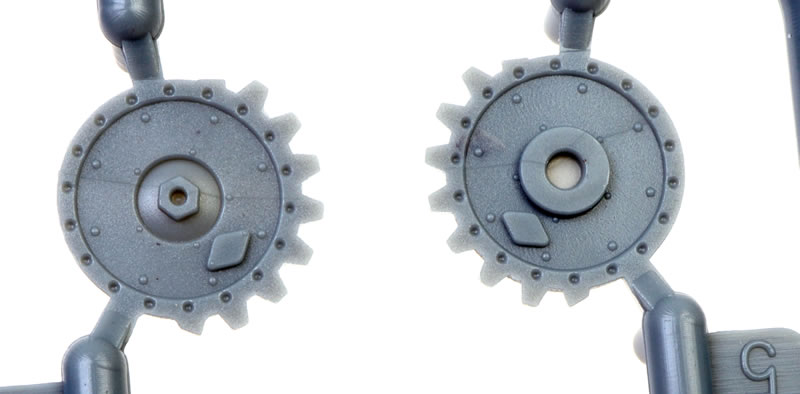
Detail parts including foot holds, handles and more are included on the photo-etched fret. They are not too tiny – should be manageable for a moderately experienced small-scale modeller.
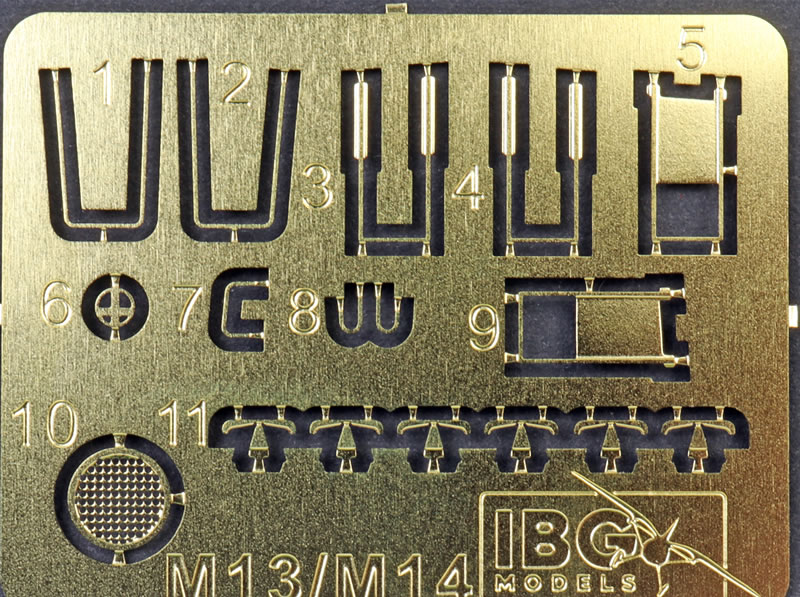
Tools, spare wheels and fuel drums are supplied in plastic for the upper hull.
The turret is broken down into the main upper shell, front mantlet and a base that will allow rotation after the model is complete.
The turret machine gun looks good. Hatches may be posed open but no figures are supplied.
Markings are supplied for four vehicles on one decal sheet printed by Techmod.
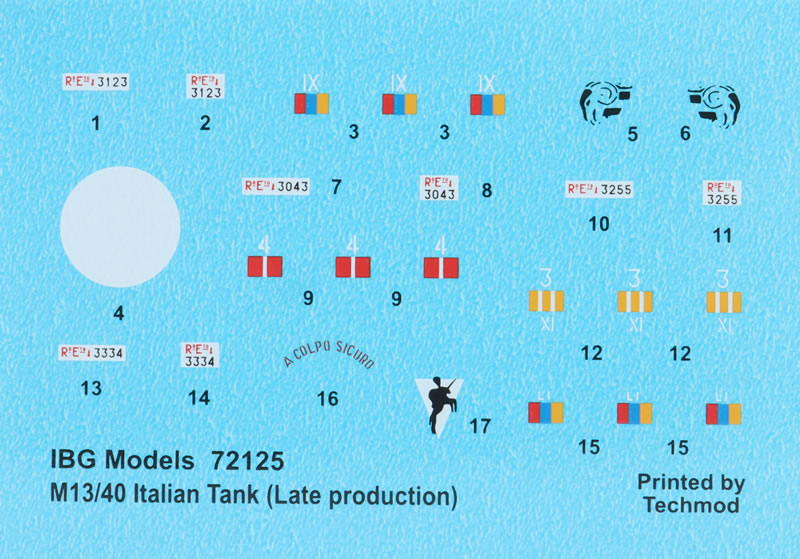
All four are finished in overall sand.
Conclusion
This is a simple but well-detailed kit of the backbone of the WWII Italian tank force. I particularly like the clever engineering of the tracks and running gear.
* Historical summary adapted from Wikipedia
Thanks to IBG Models for the sample
Text and
Images by Brett Green
Page Created 18 February, 2024
Page Last Updated
18 February, 2024


















